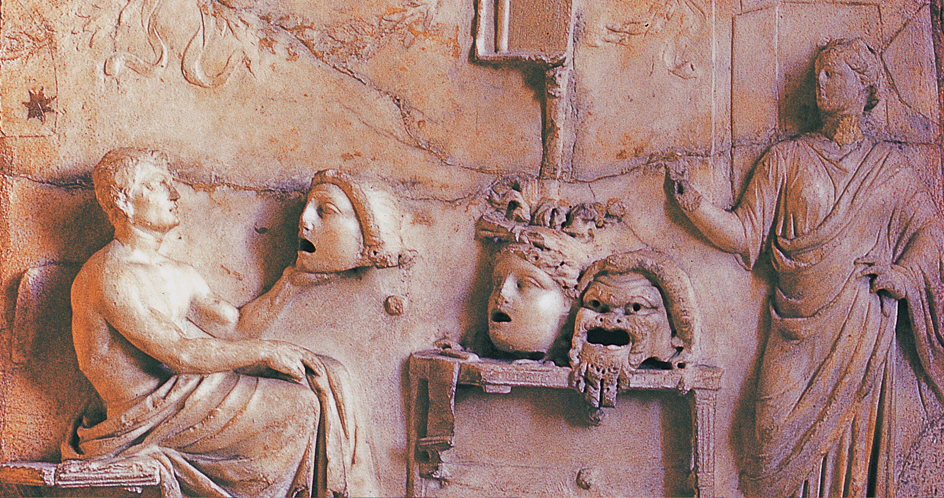Relief, in art, is sculpture in which the figures or designs project from their background. It differs from sculpture in the round, in which the figures stand alone and have three full dimensions. In relief sculpture, the figures are only partly modeled, but they give an illusion of being fully modeled. They may stand out from the background surface, or they may be carved into it. If they are carved into it, the sculpture is called hollow relief or intaglio.

Relief sculpture may be of three types: high relief; low relief; and half relief, or semirelief. Some relief sculpture combines two or more types.
High relief.
Figures modeled in high relief project from their background more than half of their implied thickness. High relief is often called by its Italian name, alto-rilievo.
Low relief.
Figures that stand out from their background less than half of their suggested thickness are in low relief. When the work is well done, they appear to stand out more than they actually do. The frieze of the Parthenon is the most famous example of low-relief sculpture (see Parthenon). Sometimes low relief may be nearly flat, as in the design on a coin. Low relief is also known by its French name, bas-relief.
Half relief, or semirelief.
Figures in half relief stand out half their thickness. Half relief is a little higher than low relief, but lower than high relief. It is often called by its Italian name, mezzo-rilievo.
History.
Sculptors have carved figures in relief for thousands of years. Peoples of the stone ages often carved or scratched figures and designs in relief. The Assyrians, Egyptians, and Greeks used all forms of relief sculpture in their palaces and temples.
Relief sculpture is used in many ways today. It is almost the only form used in making coins and medals. As in all sculpture, the subject matter, design, and execution of relief reflect the development of civilization, the religious trends, and the art of the time in which it is made.
See also Cameo; Engraving; Intaglio; Sculpture (Kinds of sculpture).
